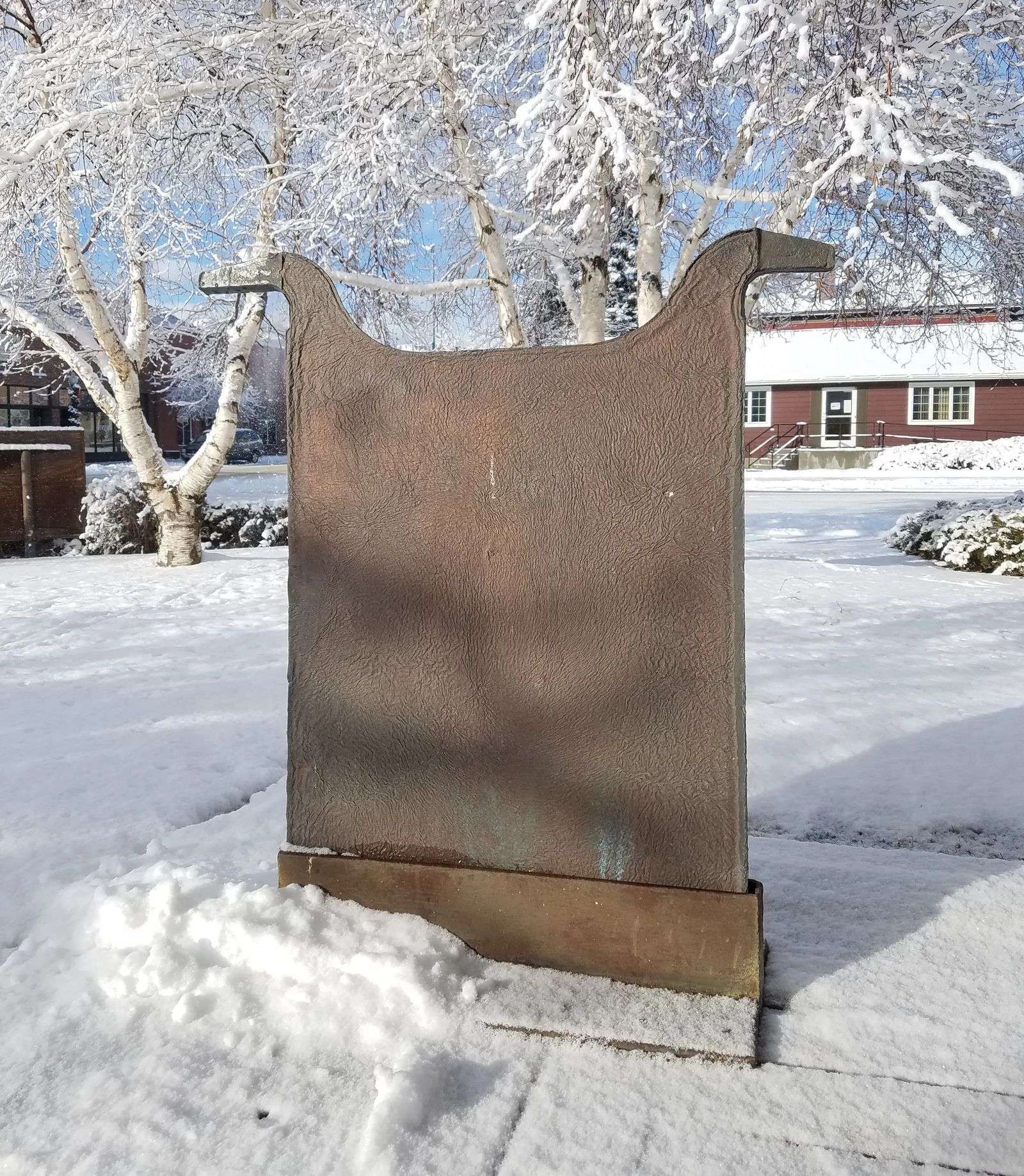
Weekly Gem #248, Anaconda's reason for being
Published 1/30/21
Location: This hidden gem is located at the intersection of Cherry Street and Park Avenue in Anaconda, MT (see the Clue Me! Map).
This unremarkable slab of metal stands in front of the Anaconda visitor’s center. Most visitors barely notice it as they head toward some really nifty, antique, red fire wagons, or unique old rail cars. But that slab of copper, and others like it, are the reason Anaconda exists!
This metal slab is called an ‘anode,’ and it was the final product of the copper smelters in Anaconda. It is more than 98% pure copper.
Vast amounts of copper ore were dug from the ‘Richest Hill on Earth,” in Butte (25 miles to the east). By 1896 this five square mile section of the earth was producing 210,000,000 pounds of copper a year, more than half of the entire U.S. copper supply.
This ore needed to be refined into copper metal. Smelting the ore not only produces copper, but also high concentrations of arsenic, along with cadmium, lead and other heavy metals. Smelting copper ore in Butte made the townspeople sick so the mine owners decided to smelt the ore in “the boonies.” Enter Anaconda!
At that time, Anaconda didn’t exist. The town was built specifically to house the workers who built and operated the smelters.
Anaconda received copper ore from Butte. It was crushed, mixed with chemicals, put in a furnace, blasted with heat, and came out cleaned and pressed copper anodes! These anodes were shipped to factories where they were refined further into pure copper usable for cables, copper wire, plumbing fittings, and other ‘modern’ conveniences.
.........
Here's the hidden gem entry from our Clue Me! map.
Clue
Anaconda's reason for being
Description
An antique copper anode
Why It's Interesting
This slab of copper was produced by the Anaconda smelters. Although 98% pure copper, it still had one more purification step to go, at factories 'back east,' which removed the small of amounts of remaining gold, silver, and other 'contaminants.'















